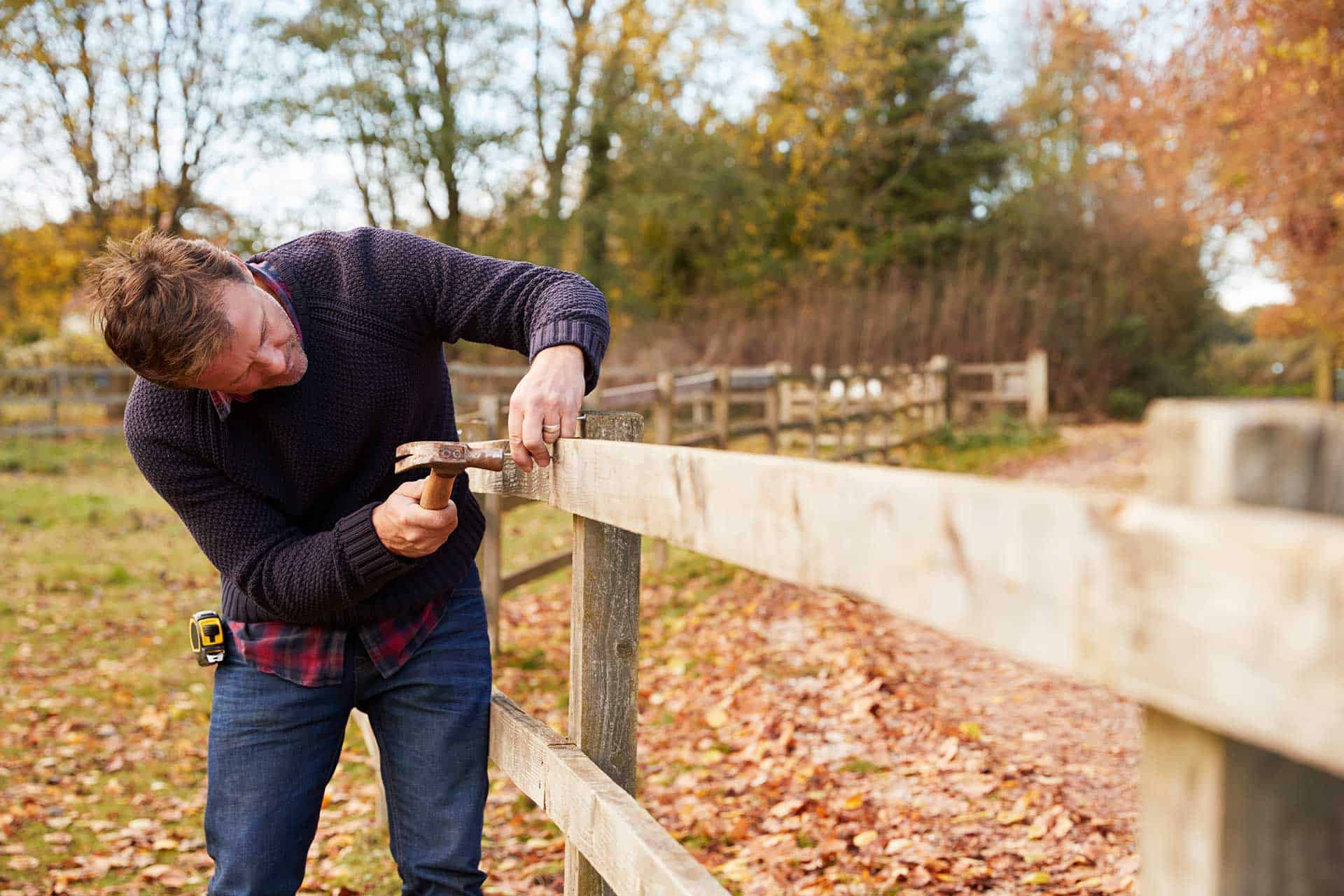With the right care, a wooden fence can go for years and years. Obviously, that means putting a bit of work in, particularly this time of year. Prepping your fence for fall and winter is a must if you want to keep it looking fresh all year round. While we never really expect any snow here in San Diego, we do get rain, which is just as bad for your fence!
Here at Legend Fence Corp, we’re big believers in looking after your fence. That bit of extra work around the change in seasons is definitely more cost effective than having to replace a rotten fence. So to get you started, here is a guide for the top tips for prepping your fence for fall and winter.
Step 1: Inspect your fence
Before you start prepping your fence for the coming fall and winter, it’s necessary to inspect it for any signs of rot, weathering, or damage from the spring and summer. Even if it’s been dry all year there’s a chance your fence has taken a beating!
This is also a good time to check that everything is still sturdy, including both boards and posts. Make sure nothing is wobbling or loose, and that your gates still close properly. Any of these mean you might have to do a bit of repair work before you start prepping the fence.
The most important things to look out for are:
• Signs of rot (boards falling down, flaking, missing sections)
• Loose or wobbly posts (a strong gust of winter wind could bring these down easier than you might think)
• Gate closing and latching properly (a rusty latch is definitely worth replacing, particularly if you have kids or pets)
While minor signs of rot can be repaired, or single boards replaced, if the signs of damage are too heavy, it’s probably worth just tearing the whole fence down and starting again. Sometimes it’s easier to just build from scratch.
Step 2: Cleaning your fence
Once you’re happy that your fence is still in a good condition, you’ll need to clean it before applying any stains or preservatives. Obviously you don’t want to get dirt trapped under the paint, as this will result in an uneven finish.
Start by brushing the fence down with a stiff-bristled broom. This is the easiest way to remove loose dirt and debris, but won’t necessarily work for moss and lichen. You might need some kind of killing spray for these, but be careful when you apply it because it’s strong stuff.
At this stage it’s also worth raking up any dead leaves that might be around the fence, and clearing any plants growing up or near it. These will just get in the way while you’re trying to paint, and also make damage and rot more likely. Similarly, dead leaves will collect moisture, which is your fence’s main enemy.
It can be worth washing your fence, but this isn’t always the best idea when it comes to wooden fences. Most of the dirt and grime should come off with a brush, but you might need to add a bit of water to get the more stubborn bits off.
If you decide to do this to your wooden fence, make sure it’s completely dry before you move on to the next stage. A wooden fence needs to be dry before you apply paint, as moisture can become trapped in the wood, which causes it to rot.
However, if you’ve got a vinyl or metal fence, then you shouldn’t have any problem washing it. In fact, these are much easier to prep for fall and winter because you only need to check for signs of damage and repair when necessary. They don’t need any kind of preservative, meaning you can skip the next step.
Step 3: Preserving your wooden fence
Finally, providing your fence is now clean and in good shape, you can move onto treating it. What product you choose is really down to you, as each has their merits and uses.
For example, many fence paints will already include weatherproofing materials. However, if you don’t want to go for paint, then get a good quality stain or preservative. You need something with high water resistance, as fall and winter are typically very wet.
Give the fence a single coat all over, wait for it to dry, and splash a bit of water on it. If it beads up and runs off, then you’re waterproof. If not, then you need to use some more wood stain. You might find that you want more than one coat anyway, as this will only improve the fence’s water resistance. This is particularly helpful if you live in a very wet area.
Some final tips
Prepping your fence for fall and winter isn’t too hard a job, providing you’ve taken care of it all year. Aside from the guide above, here are some final tips for getting the most out of your fence, and keeping it nice and protected over winter.
• Use a good quality preservative for your wooden fence. It might be a bit more expensive, but you end up saving money through not having to reapply it as often.
• Make sure your wooden fence is completely dry before painting. Ideally, leave it at least a week after the last rain before starting.
• Vinyl fences sometimes benefit from an algae treatment before winter. While algae won’t damage the fence, it can look ugly and might stain a light-colored fence.
Conclusion
Getting your fence ready for fall and winter doesn’t have to be a big job. However, if you’ve let your fence care slip through the net, it can be worth just ripping it down and starting again. If this is the case, give Legend Fence Corp a call, as we can help you design and build a fence perfectly suited to your space and needs. Plus we can then give you all the information you need to care for your new fence for years to come!


